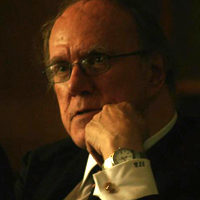One of the things many who consider themselves politically active would like to do is fundamentally change the United States from capitalist to socialist. But to do that we would have to have the majority of the people begin to believe that socialism is a better system than capitalism.
Getting the American people to change their attitudes towards socialism and communism has always been a worrisome problem for socialist activists. But now science has come to the rescue and has revealed how a tiny minority can, by sticking to its principles, get the vast majority to come around to its way of thinking.
Science Daily reported on research carried out at Rensselaer Polytechnic Institute by SCNARC (Social Cognitive Networks Academic Research Center) that shows “when just 10 percent of the population holds an unshakable belief, their belief will always be adopted by the majority of society.” This finding applies to many types of belief, including political views.
People often tell me that it will be a few more generations before we can have socialism in the U.S. Some have said it will take 500 years. But according to SCNARC, we only need to get 10 percent of the people for socialism and the trick is done, since the majority always end up adopting the minority view.
Granted, we have to get the 10 percent to have “an unshakable belief” in the socialist ideal, so we shouldn’t talk too much about “flexible interpretations of Marxism.” Another thing is we have to hurry up and get that 10 percent, because it is the tipping point.
“When the number of committed opinion holders is below 10 percent,” the SCNARC director Bolesaw Szymanski said, “There is no visible progress in the spread of ideas. It would literally take the amount of time comparable to the age of the universe for this size group to reach the majority. Once that number grows above 10 percent the idea spreads like flame.” The age of the universe is considerably longer than 500 years, so socialists and communists really have to get working.
The article also reports that it doesn’t matter from where or from whom the 10 percent comes – just as long as the level of “committed opinion holders” reaches 10 percent. The conclusions reached by the scientists were based on computer models of different social networks where a society with a given belief system held by a majority population, which was also open minded, had introduced into it an additional 10 percent of people who were “true believers.” In every case, the beliefs of the introduced 10 percent were soon widespread and became the new majority consensus.
Sameet Sreenivasan, another SCNARC investigator, said, “In general, people do not like to have an unpopular opinion and are always seeking to try locally to come to consensus. We set up this dynamic in each of our models. As agents of change start to convince more and more people, the situation begins to change. People begin to question their own views at first and then completely adopt the new view to spread it even further. If the true believers just influenced their neighbors, that wouldn’t change anything within the larger system, as we saw with percentages less than ten.”
The scientists are not just engaging in idle research. There are real world situations to which this research will be applied. Gyorgy Korniss, who co-wrote the research paper, says, “There are clearly situations in which it helps to know how to efficiently spread some opinion or how to suppress a developing opinion. Some examples might be the need to quickly convince a town to move before a hurricane or spread new information on the prevention of disease in a rural village.
In fact, I don’t think the researchers had in mind getting people to adopt socialism. Note well that remark above about knowing how “to efficiently spread some opinion” and “how to suppress a developing opinion.” The report lists the major funders of SCNARC, and we see money coming from the Army Research Laboratory, the Army Research Office and the Office of Naval Research among others.
The true purpose of the research seems to me to be how to set up groups of government agents to disrupt liberal and progressive groups (remember the larger group is made up of open minded people and the true believers are “unshakable.”) We are also told that the scientists want to study a polarized society where there is not just one traditional viewpoint to be changed. They want to expand their research to a society with two opposite major outlooks: “An example of this polarization would be Democrat versus Republican.” Indeed.
The real practical value for socialists is to see that our major traditional group is neither Republican nor Democrat but the large groups of progressives, liberals, the left, minorities and working people who make up the real majority in the US. If we can get 10 percent of this group to favor a principled socialist agenda a new world really would be possible.









